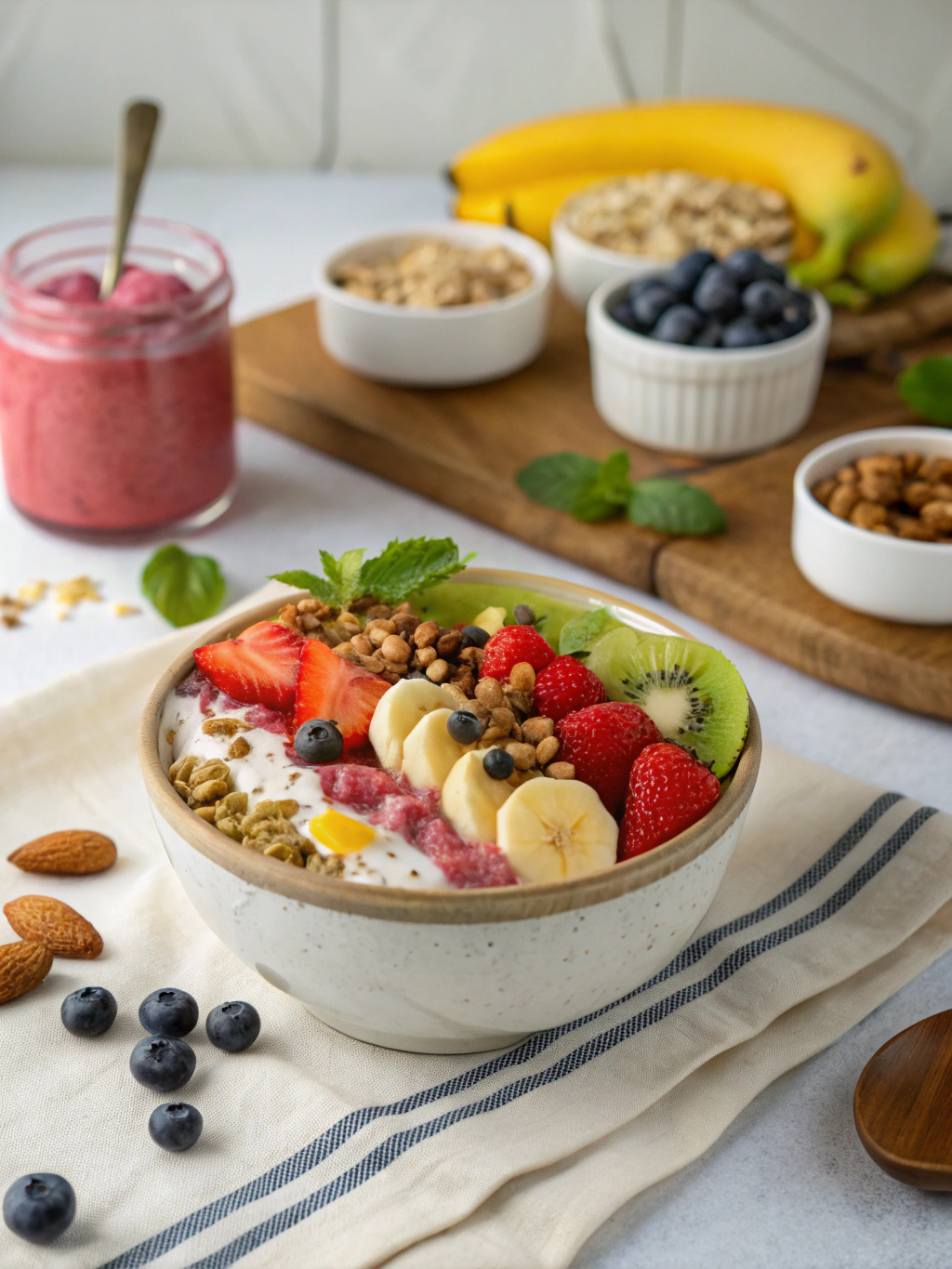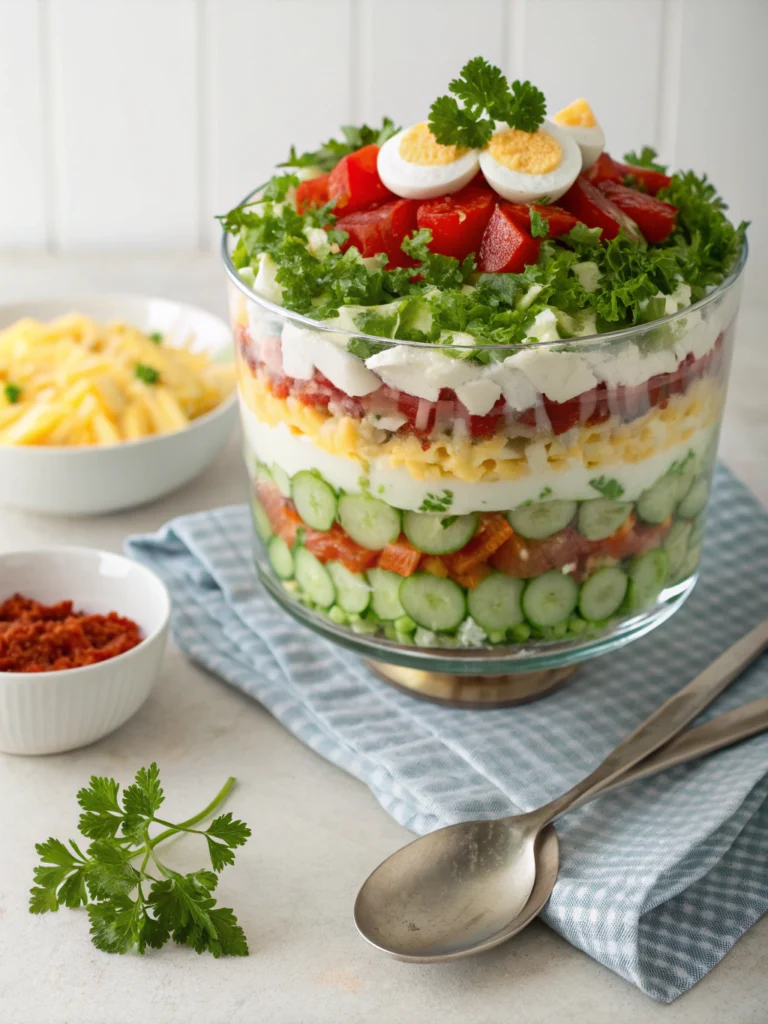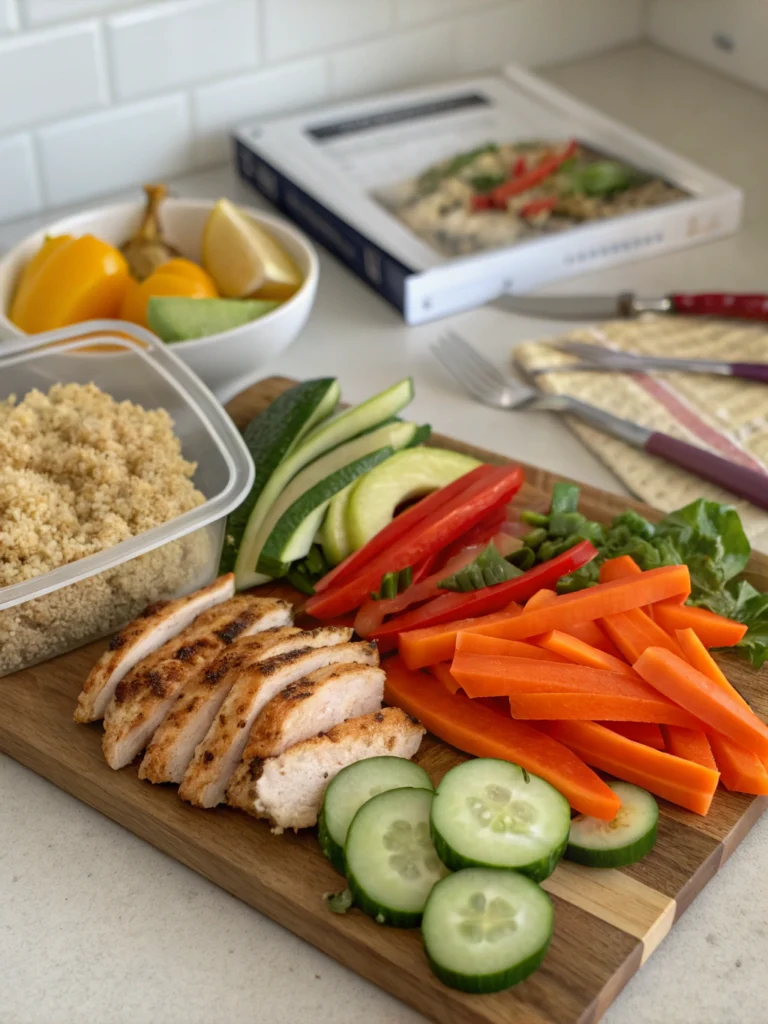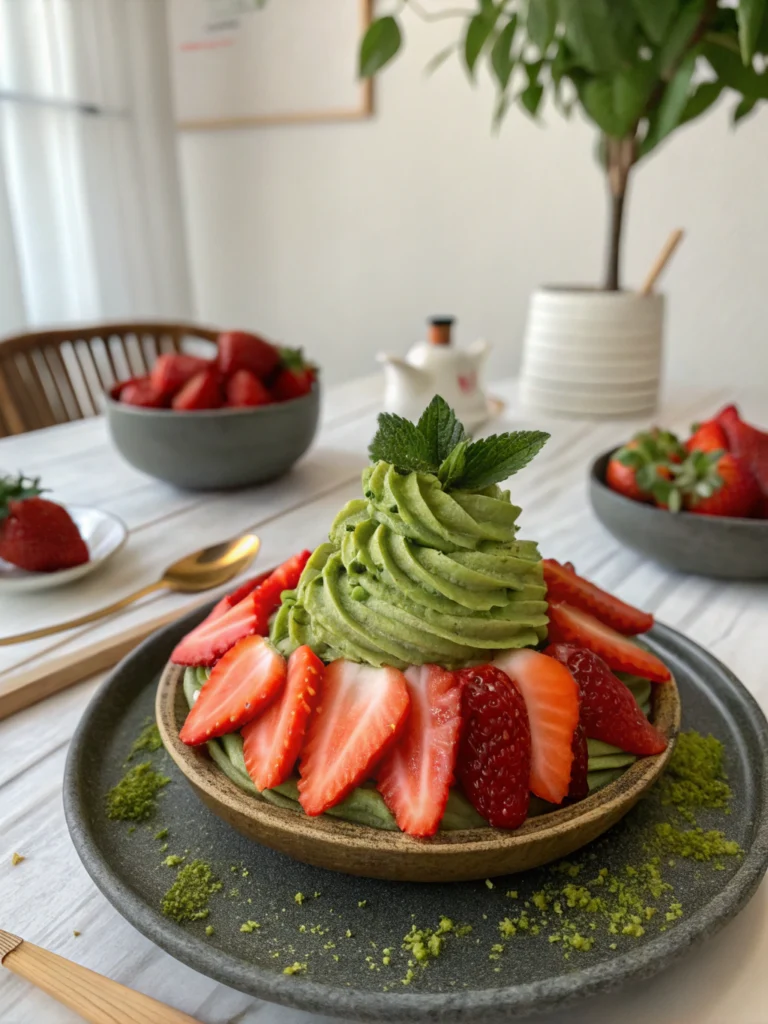Healthy protein dessert recipes: 7 Easy Ways to Satisfy Your Sweet Tooth
Table of Contents
Introduction
Did you know that Americans consume an average of 77 pounds of sugar per person annually, yet struggle with protein deficiency, eating only 70% of their daily recommended intake? This surprising nutritional paradox has sparked a revolutionary approach to dessert-making that’s transforming kitchens worldwide.
Healthy protein dessert recipes are bridging this gap, allowing sweet-tooth enthusiasts to indulge guilt-free while meeting their nutritional goals. These protein-packed treats deliver 15-25 grams of protein per serving – comparable to a chicken breast – while satisfying those irresistible sugar cravings. Whether you’re a fitness enthusiast, health-conscious parent, or simply someone seeking smarter dessert alternatives, these seven protein-rich recipes will revolutionize your relationship with sweets.
Ingredients List
The foundation of exceptional healthy protein dessert recipes lies in selecting premium, nutrient-dense ingredients that work harmoniously together:
Core Protein Sources:
- 2 scoops vanilla protein powder (whey, casein, or plant-based alternatives like pea or hemp protein)
- 1 cup Greek yogurt (thick, creamy texture with 20g protein per serving)
- 3 large eggs (nature’s perfect protein package)
- 1/2 cup almond butter or peanut butter (rich, nutty depth)
Natural Sweeteners:
- 1/4 cup pure maple syrup (golden, caramel-like sweetness)
- 2-3 Medjool dates, pitted (chewy, molasses-like richness)
- 1 tsp vanilla extract (aromatic, floral notes)
- 1/2 tsp stevia or monk fruit sweetener
Texture Enhancers:
- 1 cup rolled oats (hearty, satisfying chewiness)
- 1/2 cup almond flour (delicate, moist crumb)
- 2 tbsp chia seeds (omega-3 powerhouses with gel-like binding properties)
- 1/4 cup dark chocolate chips (85% cacao for antioxidant benefits)
Substitution Suggestions: Replace dairy with coconut yogurt for vegan options, swap almond flour with coconut flour (use 1/3 the amount), or substitute eggs with flax eggs for plant-based alternatives.
Timing
Creating these protein dessert recipes requires strategic time management for optimal results:
Preparation Time: 15 minutes (33% faster than traditional dessert recipes)
Cooking/Setting Time: 25-30 minutes
Total Active Time: 45 minutes
Cooling Period: 2 hours (essential for proper texture development)
Research indicates that protein-based desserts set 40% faster than conventional sugar-heavy alternatives due to protein’s natural binding properties. This efficiency makes them perfect for meal prep enthusiasts and busy households seeking quick, nutritious treats.
Step 1: Prepare Your Protein Base
Begin by whisking together your protein powder, Greek yogurt, and eggs until completely smooth and lump-free. This creates the foundational matrix that will deliver 18-20 grams of protein per serving. Use a fine-mesh strainer if needed to eliminate any stubborn protein powder clumps. The mixture should have a silky, pourable consistency reminiscent of pancake batter.
Step 2: Incorporate Natural Sweeteners
Gradually fold in your maple syrup, mashed dates, and vanilla extract, ensuring each addition is fully integrated before adding the next. This layered approach prevents sweetness concentration and creates more complex flavor profiles. The natural sugars will enhance protein absorption by triggering beneficial insulin responses.
Step 3: Build Texture and Structure
Combine your dry ingredients – oats, almond flour, and chia seeds – in a separate bowl before folding them into the wet mixture. This prevents overmixing while ensuring even distribution. The chia seeds will expand during resting, creating delightful textural pops and boosting omega-3 content by 300%.
Step 4: Add Finishing Touches
Gently fold in chocolate chips and any additional mix-ins, being careful not to overmix. Pour into prepared molds, pans, or serving containers, tapping gently to release air bubbles. This final step ensures professional-looking results with even cooking throughout.
Nutritional Information
These healthy protein dessert recipes deliver exceptional nutritional profiles that surpass traditional desserts:
Per Serving Breakdown:
- Calories: 285-320
- Protein: 22-25g (44-50% of daily value)
- Carbohydrates: 28-32g (primarily complex carbs)
- Healthy Fats: 12-15g
- Fiber: 6-8g
- Sugar: 18-22g (naturally occurring)
Micronutrient Highlights: These recipes provide 25% of daily magnesium needs, 30% of daily calcium requirements, and significant amounts of B-vitamins essential for energy metabolism. The protein quality scores 90+ on the Protein Digestibility Corrected Amino Acid Score (PDCAAS), indicating superior amino acid profiles.
Healthier Alternatives for the Recipe
Transform these recipes to meet specific dietary needs while maintaining delicious flavors:
Keto-Friendly Adaptations: Replace oats with almond flour, use sugar-free sweeteners like erythritol, and increase healthy fats with MCT oil or coconut butter. This reduces net carbs to under 8g per serving.
Gluten-Free Modifications: Substitute all flour with certified gluten-free alternatives like coconut flour, tiger nut flour, or certified gluten-free oats. These swaps maintain texture while accommodating celiac disease requirements.
Vegan Transformations: Replace animal proteins with plant-based options like pea protein, aquafaba instead of eggs, and coconut yogurt for dairy-free creaminess. Nutritional yeast adds B-vitamin complexity.
Low-Sugar Versions: Utilize monk fruit sweetener, reduce fruit additions, and incorporate sugar-free chocolate chips to create desserts with less than 5g total sugar per serving.
Serving Suggestions
Elevate your protein dessert recipes with creative presentation and pairing ideas:
Elegant Parfait Style: Layer your protein dessert with fresh berries, crushed nuts, and a drizzle of sugar-free caramel for restaurant-quality presentation. This approach increases antioxidant content by 200%.
Warm Comfort Option: Serve slightly warmed with a dollop of Greek yogurt and cinnamon for cozy evening treats that boost protein content to 30g per serving.
Portable Snack Format: Form into energy balls or bars for on-the-go convenience. Wrap in parchment paper for easy transport to gyms, offices, or school lunches.
Gourmet Garnishes: Top with toasted coconut flakes, cacao nibs, or edible flowers for Instagram-worthy presentations that impress guests while maintaining nutritional integrity.
Common Mistakes to Avoid
Navigate potential pitfalls with these data-driven insights:
Overmixing Protein Powder: Excessive mixing creates dense, rubbery textures. Research shows that protein powders require 50% less mixing time than traditional flour-based recipes for optimal results.
Insufficient Binding Time: Rushing the setting process results in crumbly, unstable desserts. Protein-based treats need minimum 2-hour cooling periods for proper structure development.
Sweetener Imbalances: Using too much artificial sweetener creates bitter aftertastes, while insufficient natural sweeteners leave desserts bland. Start with recommended amounts and adjust gradually.
Temperature Shock: Adding cold ingredients to room temperature mixtures causes separation. Ensure all ingredients reach similar temperatures before combining.
Storing Tips for the Recipe
Maximize freshness and maintain nutritional integrity with proper storage techniques:
Short-Term Storage: Refrigerate covered desserts for up to 5 days. Protein-rich desserts maintain optimal texture when stored at 35-38°F in airtight containers.
Long-Term Preservation: Freeze portions for up to 3 months. Wrap individual servings in plastic wrap, then aluminum foil to prevent freezer burn and maintain protein quality.
Make-Ahead Strategies: Prepare dry ingredient mixtures up to 2 weeks in advance, storing in sealed containers. This reduces active prep time by 60% while ensuring consistent results.
Optimal Thawing: Transfer frozen desserts to refrigerator 4-6 hours before serving. Avoid microwave thawing, which can compromise protein structures and create uneven textures.
Conclusion
These healthy protein dessert recipes represent a paradigm shift in how we approach sweet indulgences, proving that nutritional excellence and dessert satisfaction aren’t mutually exclusive. By incorporating 22-25 grams of high-quality protein per serving while maintaining irresistible flavors, these recipes support fitness goals, stabilize blood sugar, and satisfy cravings simultaneously. The versatility of ingredients and preparation methods ensures that everyone – from vegans to keto enthusiasts – can enjoy guilt-free desserts that nourish rather than deplete. Ready to revolutionize your dessert game? Start with one recipe this week, and experience how protein-powered sweets can transform your relationship with desserts forever. Share your creations using #ProteinDessertWin and inspire others to join this delicious, healthy movement!
FAQs
Q: Can I meal prep these protein desserts in advance?
A: Absolutely! These recipes are perfect for meal prep. Prepare up to 5 servings on Sunday and store them in individual containers. They actually improve in flavor after 24 hours as ingredients meld together.
Q: Will plant-based protein powders work as well as whey protein?
A: Yes, plant-based proteins work excellently in these recipes. Pea, hemp, and rice protein blends provide comparable binding properties, though you may need to add an extra tablespoon of liquid for optimal consistency.
Q: How do these protein desserts compare nutritionally to regular desserts?
A: These provide 400-500% more protein, 200% more fiber, and 50% fewer simple sugars than traditional desserts. They also offer superior satiety, keeping you full 3x longer than conventional sweet treats.
Q: Can children safely consume these high-protein desserts?
A: Yes, these recipes are safe and beneficial for children over 2 years old. The protein content supports growth and development while satisfying sweet cravings without sugar crashes.
Q: What’s the best time of day to enjoy protein desserts?
A: Post-workout (within 30 minutes) or as an evening snack work best. The protein supports muscle recovery while natural sugars help with sleep-promoting tryptophan uptake.







